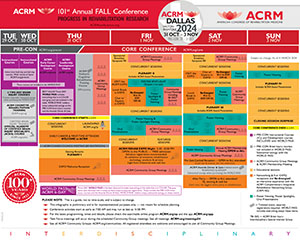Health Services Research
International
Readiness of Primary and Emergency Care Physiotherapy Services for the COVID 19 Pandemic
Saturday, November 2, 2024
10:00 AM - 10:15 AM
Location: Station 8: ROOM: POSTERLAND / Trinity Poster / Exhibit Hall REGION: Tower Lobby Level >>>

Oluwatoyin A. Adeniji, PhD (she/her/hers)
Dr
University of Wollongong
Wollongong, New South Wales, Australia
Presenting Author(s)
Research Objectives: To assess the readiness of primary and emergency care physiotherapy services for continuity of care for musculoskeletal patients during the COVID 19 pandemic in the UK and Australia, and to identify differences between the two countries.
Design: An international online cross-sectional survey was conducted between January and April 2023. The survey used a three point-point Likert scale of agreement, neutral and disagreement to understand readiness. Data was analysed descriptively. Chi-square was used to determine differences in the readiness between countries.
Setting: The study setting includes primary care in the UK and emergency departments in Australia.
Participants: Study participants are physiotherapists managing musculoskeletal patients in the primary care and emergency departments in the UK and Australia respectively.
Interventions: The survey was used to understand physiotherapy services in primary and emergency care readiness for continuity of healthcare during the COVID 19 pandemic.
Main Outcome Measures: Items identified in Dearing's readiness tools for global health interventions were used to assess the readiness of primary and emergency care for COVID 19 pandemic.
Results: One hundred and fifty-three physiotherapists participated in the survey, with 64.1% from the UK and 35.9% from Australia. The main age groups were 35-44 years (42.2%) and 45-54 years (31.2%), with 59.3% female participants. In both the UK and Australia, respondents reported higher disagreement regarding the availability of technical support (60.7%; 66.7%), stakeholder buy-in of interventions introduced (63.6%; 90.5%), emergency response guidance (51.6%; 41.6%), infrastructure (42.2%, 39.0%), and human resources (37.9%, 39.0%). Conversely, there was more agreement with leadership (65.6%; 53.7%), clear mission and vision (55.2%; 41.0%), compatibility of interventions (48.5%; 32.4%), external partnerships (39.3%; 24.2%), finance (38.1%; 43.2%), supplies and procurement (35.5%; 48.7%), and learning (35.7%; 40.5%). There was no significant difference between countries in terms of readiness (p < 0.001).
Conclusions: This study indicates that primary and emergency care were inadequately prepared for continuous healthcare services for musculoskeletal patients during the COVID19 pandemic. This underscores the need to prepare physiotherapy services for public health emergencies, with consideration for context.
Author(s) Disclosures: No conflict of interest declared
Design: An international online cross-sectional survey was conducted between January and April 2023. The survey used a three point-point Likert scale of agreement, neutral and disagreement to understand readiness. Data was analysed descriptively. Chi-square was used to determine differences in the readiness between countries.
Setting: The study setting includes primary care in the UK and emergency departments in Australia.
Participants: Study participants are physiotherapists managing musculoskeletal patients in the primary care and emergency departments in the UK and Australia respectively.
Interventions: The survey was used to understand physiotherapy services in primary and emergency care readiness for continuity of healthcare during the COVID 19 pandemic.
Main Outcome Measures: Items identified in Dearing's readiness tools for global health interventions were used to assess the readiness of primary and emergency care for COVID 19 pandemic.
Results: One hundred and fifty-three physiotherapists participated in the survey, with 64.1% from the UK and 35.9% from Australia. The main age groups were 35-44 years (42.2%) and 45-54 years (31.2%), with 59.3% female participants. In both the UK and Australia, respondents reported higher disagreement regarding the availability of technical support (60.7%; 66.7%), stakeholder buy-in of interventions introduced (63.6%; 90.5%), emergency response guidance (51.6%; 41.6%), infrastructure (42.2%, 39.0%), and human resources (37.9%, 39.0%). Conversely, there was more agreement with leadership (65.6%; 53.7%), clear mission and vision (55.2%; 41.0%), compatibility of interventions (48.5%; 32.4%), external partnerships (39.3%; 24.2%), finance (38.1%; 43.2%), supplies and procurement (35.5%; 48.7%), and learning (35.7%; 40.5%). There was no significant difference between countries in terms of readiness (p < 0.001).
Conclusions: This study indicates that primary and emergency care were inadequately prepared for continuous healthcare services for musculoskeletal patients during the COVID19 pandemic. This underscores the need to prepare physiotherapy services for public health emergencies, with consideration for context.
Author(s) Disclosures: No conflict of interest declared
Learning Objectives:
- Understand the factors influencing readiness of primary and emergency care physiotherapy services for continuity of care during public health emergencies.
- To identify potential differences in contextual readiness for public health emergencies
- Identify key areas for improvement in physiotherapy services to enhance resilience and ensure continuous care for musculoskeletal patients during future crises.

.jpg)
.jpg)
.jpg)
